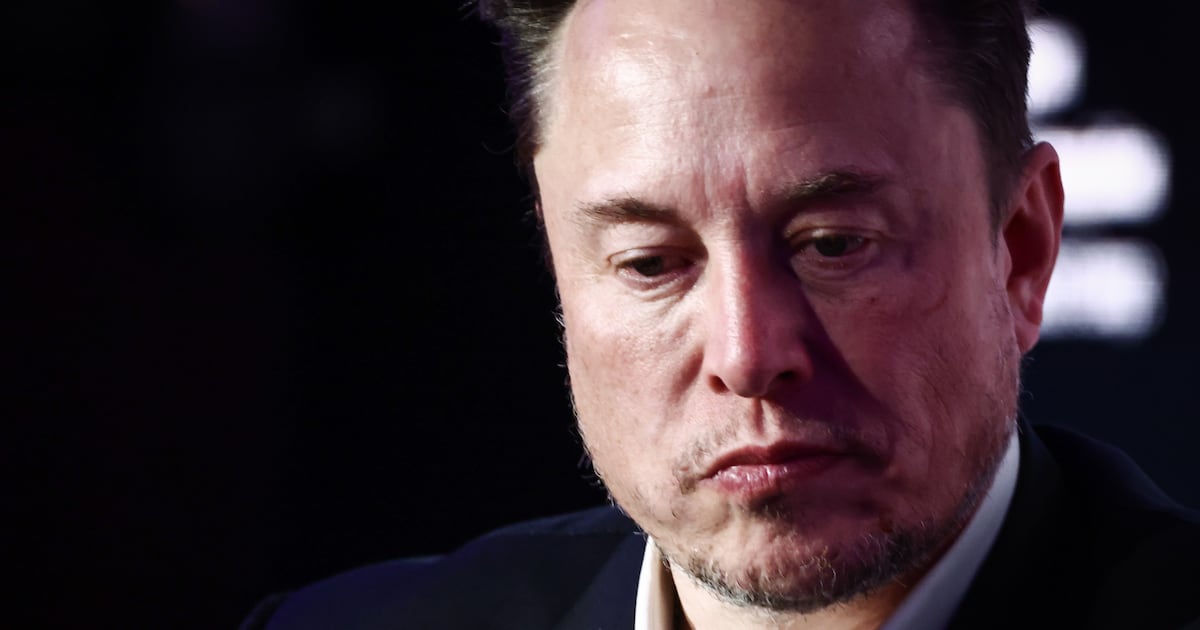Donald Trump has been a larger-than-life figure for almost a generation: businessman, entertainer, pageant purveyor, and life philosopher. In politics though, most have seen him as an oddity at best, if not an outright lightweight. His decision to enter the Republican race this year was met with similar disdain. Pundits thought he would be a flash in the pan—a momentary media darling—whose lack of substance and irreverent ways would eventually catch up with him. Many argued that he would follow a similar trajectory to some of the more unlikely 2012 Republican candidates like Herman Cain (remember him?). We thought this as well.
So began Trump-mentum 2015—and it was the “flash” we’d all been expecting. He rose from 0.4 percent of the vote when Ipsos first started including him in our candidate list in March, to 9.7 percent the week of June 16 when he announced. However, since July 25 he has taken a commanding lead—and kept it. He is outstripping his rival candidates by more than 20 points, and polling comfortably at 30 percent or higher.
Perhaps most impressively, this high rating has held—even increased—despite behavior that normally turns off voters: bombastic statements about his own worth and accomplishments, divisive statements about immigration, and more.
So is Trump just a summer fling or something more serious? Does he have a real chance to be the Republican nominee?
Let’s examine the evidence by assessing each argument against Trump securing the nomination, and its relative strength.
1. THE “IT’S TOO EARLY” ARGUMENT
These pollsters say: Forget the polls (for now). They are misleading this far out from Election Day, and are dangerous false positives. People are not thinking seriously about the election now, so views are more impressionistic and subject to media buzz than grounded or usefully predictive of an election outcome. We always warn our clients that at this stage it is way too early to discern much from the polls.

This is illustrated well in the table above, which shows the difference between published poll data (using poll aggregator sites) and the final election outcome at various points prior to Election Day: We see that while the average poll variance from the final outcome one week before Election Day was just 1.7 percent, the variance a year out was almost 8 percent.
This data is a cautionary note that we probably shouldn’t pay too much attention to poll data this far from Election Day. Based on this evidence alone, we would discount Trump’s chances… but this is not our only evidence of course.
Argument strength: Pretty good
Our odds for Trump getting the nomination based on this argument alone: 10/90
2. THE “BUT HE’S A FAUX PAS MACHINE” ARGUMENT
Conventional wisdom tells us that political indiscretions like “He’s a war hero because he was captured—I like people that weren’t captured, OK?” or “They’re rapists” will sink a campaign. They did with George Allen and “macaca” in 2006, and with Rick Perry’s 2011 Republican debate “oops” moment.
This is harder to quantify but a very important qualitative factor in assessment. So far he has survived! This by itself is impressive, and even seems to be some of his appeal. Perhaps we have bypassed the era when an embarrassing online video is sufficient fodder to sink a campaign?
Whether this continues remains to be seen; perhaps enough people aren’t yet paying attention.
Argument strength: Decent
Our odds for Trump getting the nomination based on this argument alone: 20/80
3. THE “MORE AIR THAN SUBSTANCE” ARGUMENT
This argument goes: Trump is a media phenom. The “Kim Kardashian” of politics: all air and no substance. We’ve heard of him a lot, but we’re not quite sure who he really is, or what he stands for. He is polling well because of name recognition alone, but that will soon fade when people start to consider the man himself. However, the data does not support this at all.

A good baseline measure for candidate viability is what we call a “fam-fav” analysis: familiarity and favorability measures for each candidate. Typically, candidates early on in their campaigns struggle most with name recognition: those who people recognize do better (than they would or will otherwise) solely because people recognize their names (familiarity) and indicate in polls that they would vote for them. By pairing this with data on how favorably people feel about the candidate, we’re often able to identify early likely winners and “duds.”
For example, if we look at the 2011/12 Republican primary candidates, Romney had the strongest fam/fav combination—and he ultimately took the candidacy. Comparatively, Herman Cain, while polling as well-known—was indeed a “flash in the pan” given his weak favorability scores.
As such, we would expect that while Trump’s familiarity levels would be very high, his favorability would be comparatively lower due to his non-political background and blustering persona. However, we can see in the chart above that Trump enjoys very high fam/fav ratings and indeed clusters with “serious” politicians Joe Biden and Hillary Clinton—far outstripping all his Republican opponents on both familiarity and favorability measures.
It seems there is substance here, perhaps more than we initially thought. Established recognition and favorable perceptions that come from outside politics (especially powerful, perhaps, in this period of strong anti-Washington sentiment) puts him on “fam-fav” par with senior Democrat politicians Clinton and Biden—and means that there is more here than it appears.
Argument strength: Not so good
Our odds for Trump getting the nomination based on this argument alone: 60/40
4. THE “WE’VE SEEN THIS ALL BEFORE” ARGUMENT
The rise and fall of a host of Republican candidates from the 2012 election really says it all. Both Perry and Gingrich got about six weeks in the sun, although none pulled as far ahead nor grew the lead like Trump has over the past weeks. The 2011/12 nomination cycle also had a strong “establishment” favorite in Mitt Romney, whose early numbers tracked high.
So, not a direct comparison to 2015/16, but if we learned anything from the last Republican nomination fight, it is that we can cycle through candidates very quickly.
Argument strength: Very good
Our odds for Trump getting the nomination based on this argument alone: 5/95
5. THE “TRUMP’S VOTERS WON’T SHOW UP AT THE POLLS” ARGUMENT
This theory suggests that Trump is attracting the virtually engaged but that they won’t show up on Election Day; that they are “unengaged” and less likely to vote. But evidence shows the contrary.
Typically, voter turnout is explained by a series of concentric circles, such as the image below: increasingly smaller proportions of the population turn out to vote depending on the type of election. Critically, the voter profile also changes as we focus our sights on different voter types, with Republicans more likely to actually turn up on Election Day than Democrats.

For primaries in particular, it is generally a far more ideologically active “base” that casts a vote compared to the larger—and typically broader more centrist—group of Republicans who vote on Election Day, for the presidential candidates.
While this would naturally support a “nontypical” and base-friendly candidate like Trump, the argument has also been posited that Trump’s voters themselves are “nontraditional” Republicans and so are less likely to actually vote.
So, with this knowledge, and our working hypothesis that Trump supporters are unlikely to show up at the polls, we would expect to see his share of the vote shrink when we move from all Republicans, to those who are registered, and will actually vote. This, however, is not at all the case:

There is little difference in support over time among these groups, suggesting that supporter turnout will not hold Trump back from winning the nomination.
Argument strength: Meh
Our odds for Trump getting the nomination based on this argument alone: 70/30
6. THE “BUT TRUMP DOESN’T KNOW WHAT AMERICA WANTS” ARGUMENT
This is a more qualitative and subjective argument, but fundamentally suggests that Trump just doesn’t understand the country or the Republicans well enough to be a serious contender, much less win the nomination. This argument has been made by fellow candidates Marco Rubio, Jeb Bush, Rick Santorum, as well as conservative columnists like George Will, Erick Erickson, and Matt Lewis.
To us, this argument couldn’t be more wrong. Indeed, the polling shows the exact opposite. That Trump is actually on to something. That his rants against immigrants and other assorted groups is tapping into a pervasive latent nativism—rather than recent GOP primaries that focused on terrorism, abortion, and family values. And the data on this is absolutely striking.

Indeed, the Republican base is much more likely to not “identify with America” and to feel like a “stranger in their own country.” More impressively, 58 percent of Americans independent of political party agree that “more and more, I don’t identify with what America has become.” This is very fertile ground for a populist of Trump’s ilk.
Argument strength: Terrible
Our odds for Trump getting the nomination based on this argument alone: 99/1
CONCLUSION? DON’T UNDERESTIMATE THE POWER OF THE DONALD
Trump is a genuine contender in this race. More importantly, his nativist messaging resonates with the Republican base. Contrary to the pundits, there is a method to his madness. And, more broadly, there is room for his brand of populism.
Of course, it is still early and most people aren’t paying much attention to the race yet—so if we had to put money on it today, we’d still bet against Trump winning the nomination, but not by much. The biggest X-factor in all this is Trump himself. He might tire of the political thing, turning his energies elsewhere.
So Trump is not just a summer fling. Should we all be getting the wedding invite? Maybe! We wouldn’t be surprised if it showed up in the mail sometime mid-year 2016.

Cliff Young is president of Ipsos Public Affairs US, and an adjunct professor at both Johns Hopkins and Columbia Universities. His research specialties include social and public opinion trends, crisis management, political risk polling, and political polling.
Julia Clark is a senior vice president at Ipsos Public Affairs and specializes in political, social, and issues-based research.





